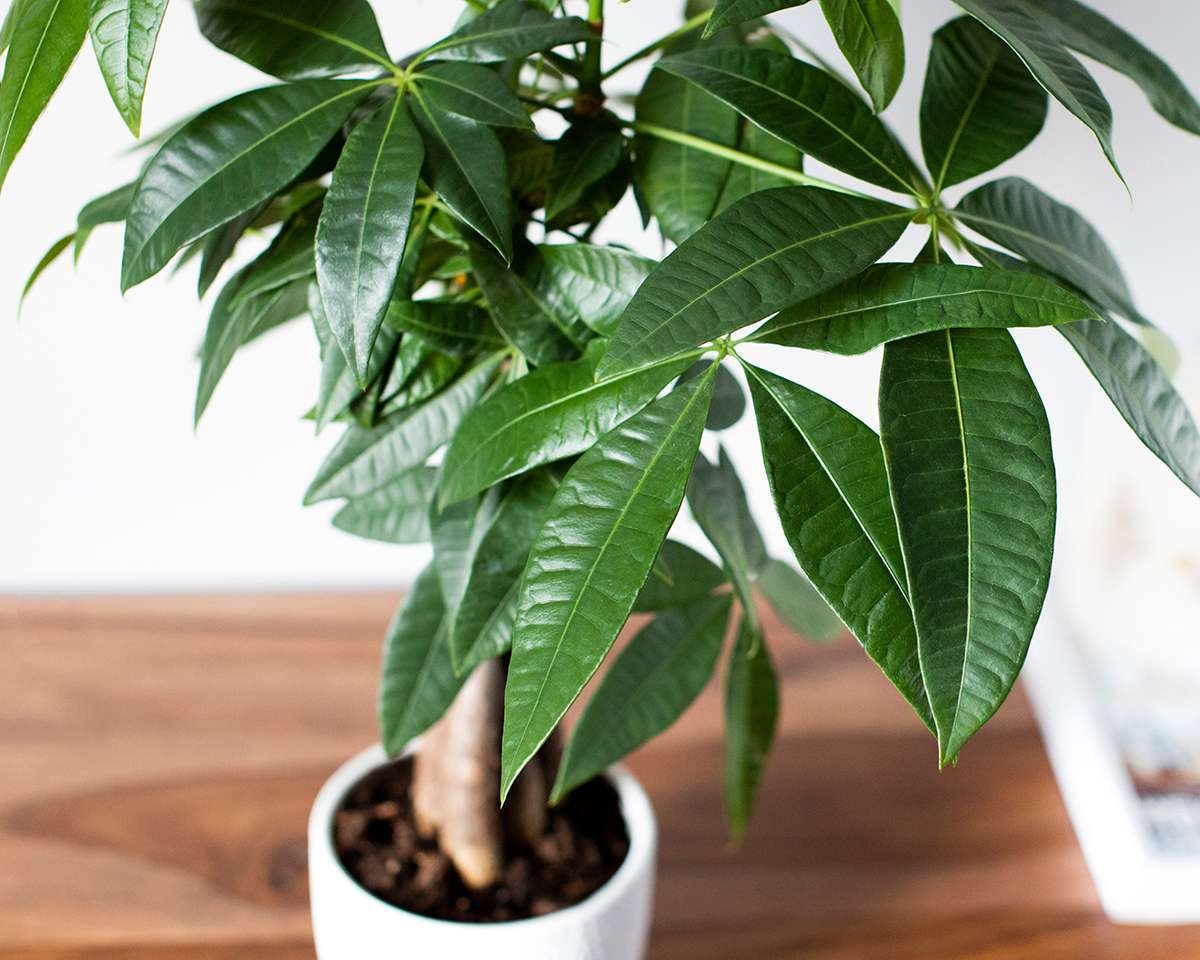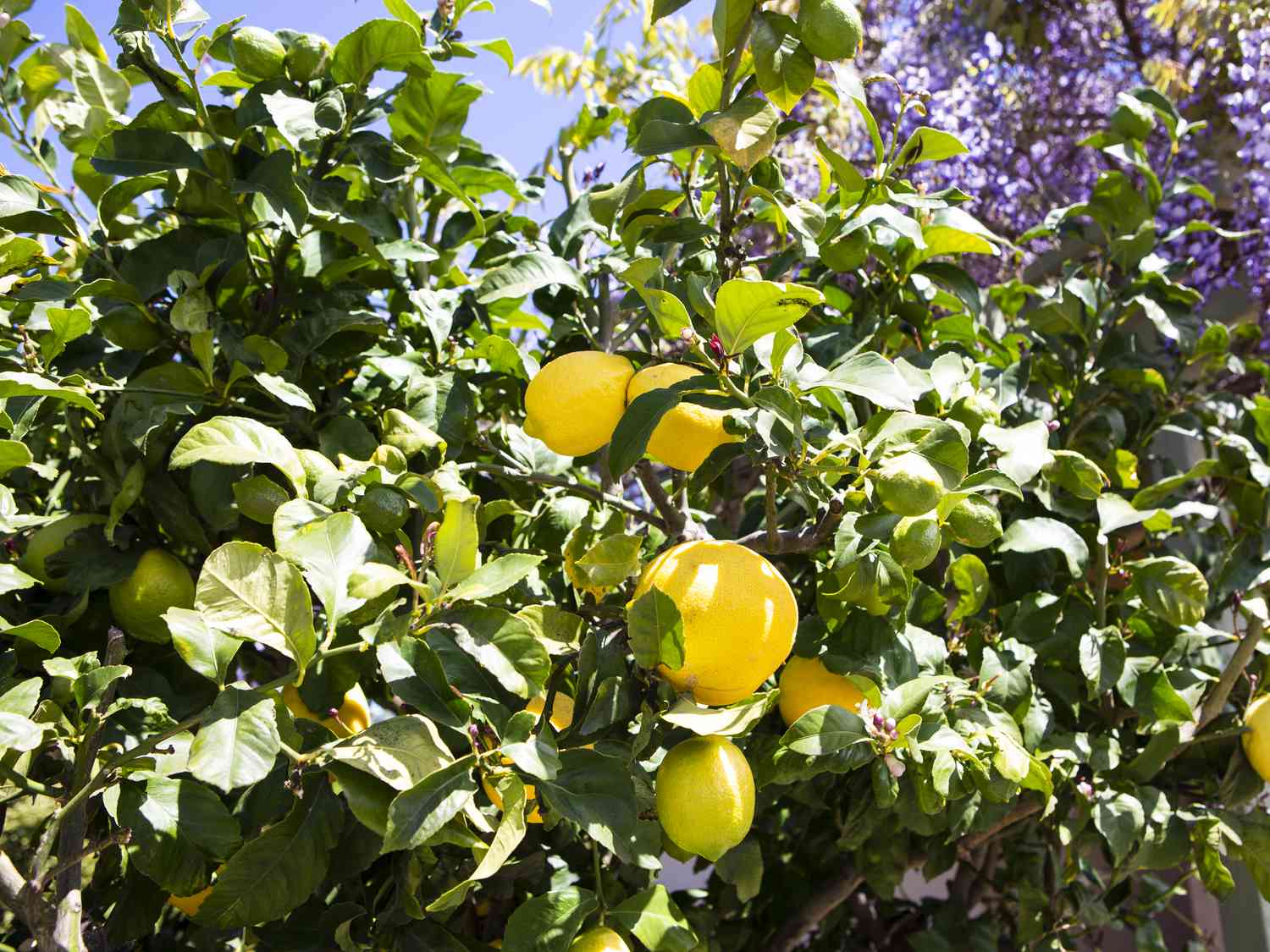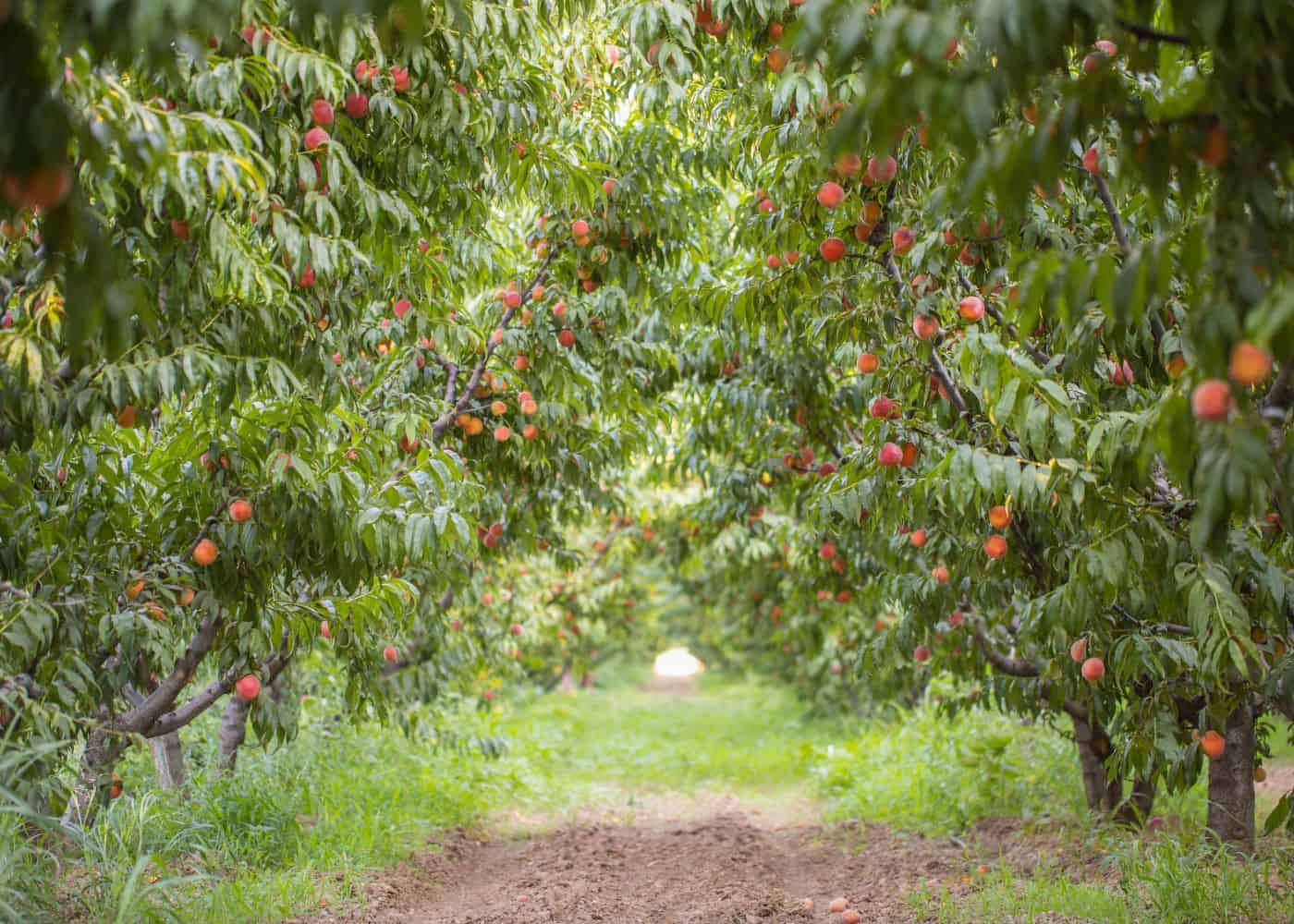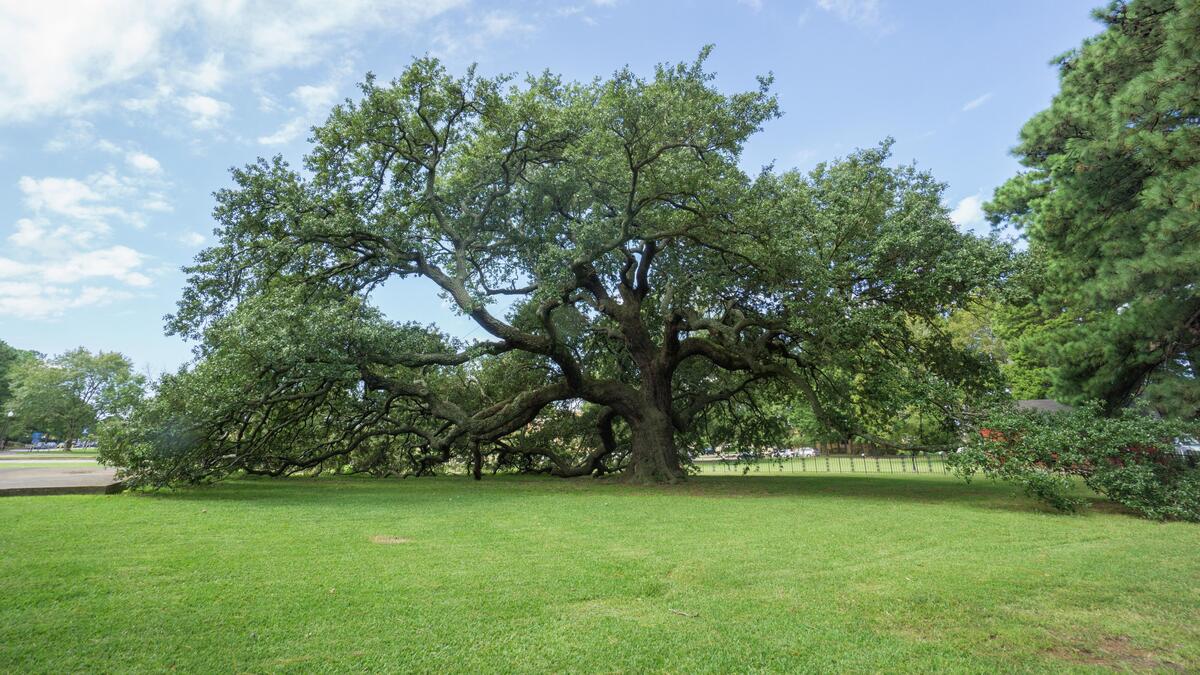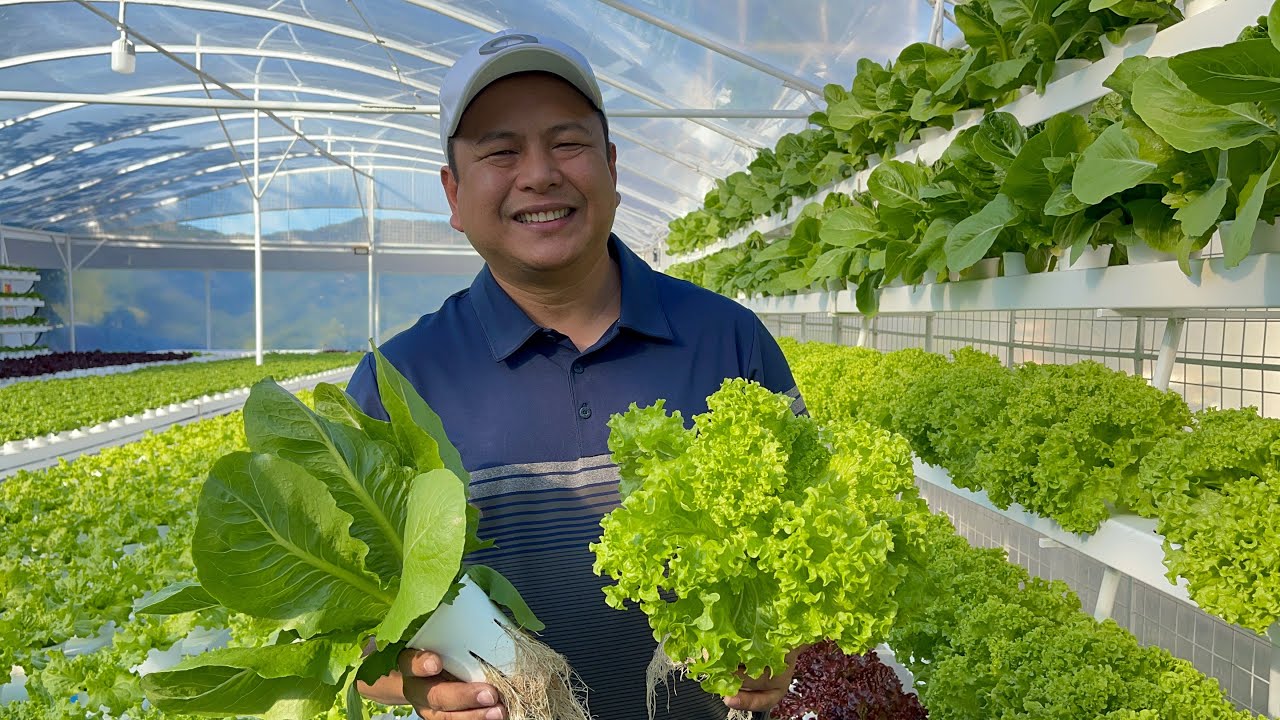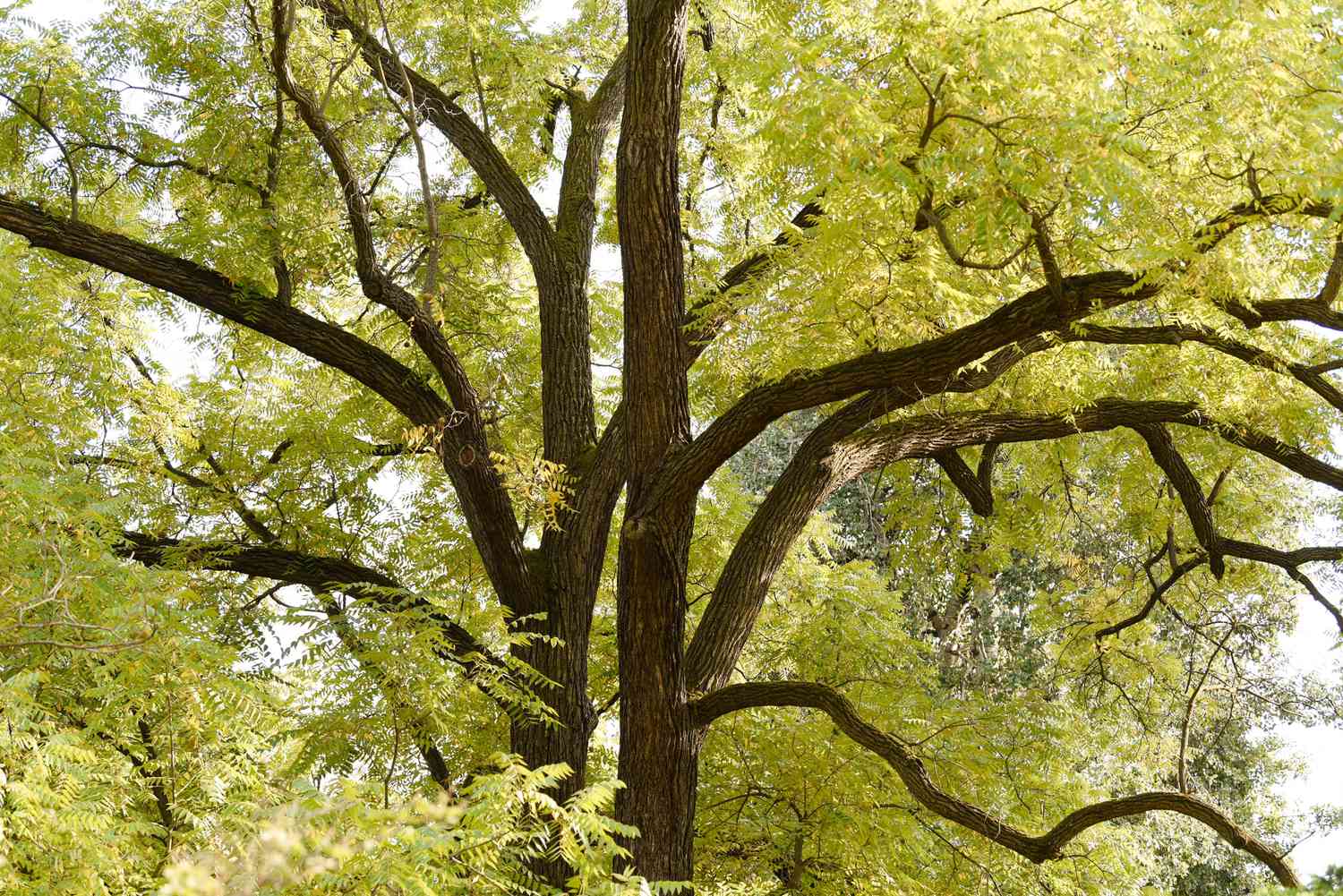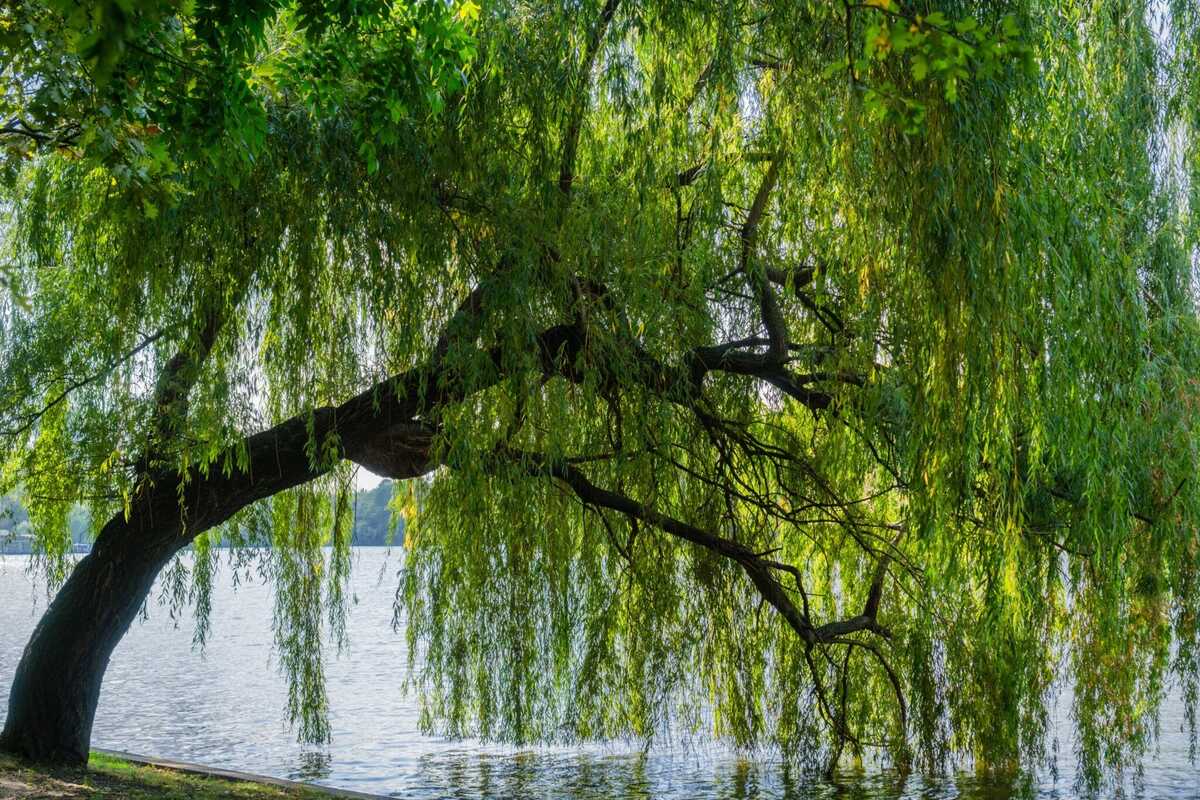Home>Gardening Tips and Tricks>Eco-Friendly Gardening>How Much Carbon Do Trees Absorb
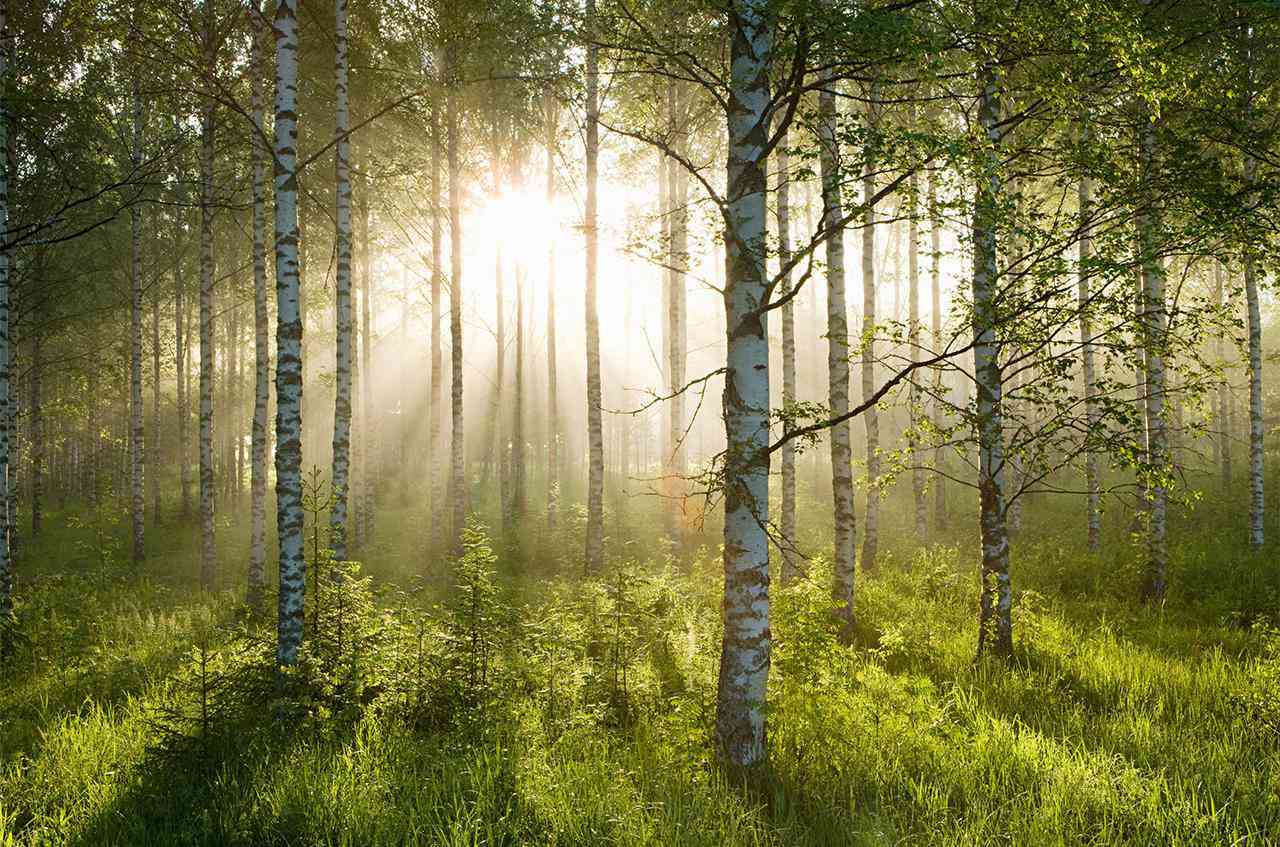

Eco-Friendly Gardening
How Much Carbon Do Trees Absorb
Modified: February 8, 2024
Discover the importance of eco-friendly gardening and learn how to reduce carbon footprint. Find out how much carbon trees can absorb and promote sustainability in your garden.
(Many of the links in this article redirect to a specific reviewed product. Your purchase of these products through affiliate links helps to generate commission for Chicagolandgardening.com, at no extra cost. Learn more)
Table of Contents
- Introduction
- Understanding the Carbon Cycle
- Importance of Trees in Carbon Absorption
- Factors Affecting Carbon Absorption by Trees
- Measurement and Estimation of Carbon Sequestration
- Case Studies: Trees’ Carbon Absorption in Different Ecosystems
- The Role of Deforestation in Carbon Emissions
- Enhancing Carbon Sequestration through Tree Planting Initiatives
- Conclusion
Introduction
Welcome to the world of eco-friendly gardening! In an era where sustainability and environmental consciousness are becoming increasingly important, adopting eco-friendly gardening practices has never been more essential. One crucial aspect of eco-friendly gardening is understanding the role of carbon absorption in creating a greener and healthier planet. In this article, we will delve into the fascinating world of trees and their remarkable ability to absorb carbon, and explore how this knowledge can be harnessed to create a more eco-friendly garden.
The carbon cycle is a vital natural process that maintains the delicate balance of our planet’s atmosphere. Carbon dioxide (CO2) is a greenhouse gas that contributes to global warming and climate change. Fortunately, nature provides us with a powerful ally to combat this problem – trees. Trees have the incredible ability to absorb and store carbon dioxide through a process called carbon sequestration.
This process begins as trees and other plants take in carbon dioxide during photosynthesis, an essential process for their growth. They convert this carbon dioxide into carbohydrates, which are used to fuel their own growth and development. Through this process, trees act as a natural carbon sink, effectively removing carbon dioxide from the atmosphere.
The importance of trees in carbon absorption cannot be overstated. They play a vital role in mitigating climate change by reducing the amount of carbon dioxide in the atmosphere. Trees also release oxygen as a byproduct of photosynthesis, further contributing to a healthier and cleaner environment.
It is worth noting that not all trees are equal in terms of their carbon absorption capacity. Different tree species have varying capacities to sequester carbon. Factors such as the tree’s size, age, location, and overall health can also influence its ability to absorb carbon. Understanding these factors is crucial in maximizing the carbon sequestration potential of trees in our eco-friendly gardens.
As we continue our journey through this article, we will explore the various factors that affect carbon absorption by trees, the methods used for measuring and estimating carbon sequestration, as well as real-life case studies showcasing the carbon absorption capabilities of trees in different ecosystems. We will also highlight the detrimental effects of deforestation on carbon emissions and discuss initiatives to enhance carbon sequestration through tree planting.
So, let us embark on this exciting journey into the world of eco-friendly gardening and explore how the simple act of planting and nurturing trees can make a profound impact on our planet’s health and sustainability.
Understanding the Carbon Cycle
To truly comprehend the importance of trees in carbon absorption, it is essential to have a clear understanding of the carbon cycle. The carbon cycle is a natural process in which carbon atoms are exchanged between the atmosphere, land, oceans, and living organisms.
The primary component of the carbon cycle is carbon dioxide (CO2), a greenhouse gas that contributes to global warming and climate change. One of the crucial aspects of the carbon cycle is the balance between carbon dioxide emissions and carbon dioxide absorption. While carbon dioxide is released into the atmosphere through natural processes such as respiration and volcanic activity, it is also absorbed by plants and trees through a process known as carbon sequestration.
During photosynthesis, plants and trees take in carbon dioxide from the atmosphere and convert it into organic compounds such as glucose. This process utilizes sunlight as an energy source to convert carbon dioxide and water into glucose and oxygen. The glucose produced serves as a vital source of energy for the growth and survival of the plant or tree.
Through this process, plants and trees act as natural carbon sinks, effectively removing carbon dioxide from the atmosphere and storing it in their biomass – the trunk, branches, leaves, and roots. As trees grow, they continue to absorb carbon dioxide, thus increasing their ability to act as carbon storage facilities.
In addition to trees, other components of the ecosystem also participate in the carbon cycle. Soil, for instance, plays a significant role in carbon storage. When organic matter, such as leaves or dead plants, decomposes, it contributes to the formation of humus, a substance rich in carbon. This carbon-rich soil helps to maintain the carbon balance in the ecosystem.
Another important aspect of the carbon cycle is the release of stored carbon back into the atmosphere. When trees or plants die, they decompose, releasing carbon back into the atmosphere through a process called decomposition. Forest fires and deforestation activities also contribute to the release of stored carbon into the atmosphere.
Understanding the carbon cycle provides a foundation for comprehending the role of trees in carbon absorption. Trees act as crucial carbon sinks, sequestering and storing carbon dioxide, thus helping to mitigate climate change. By fostering an understanding of the carbon cycle, we can better appreciate the importance of preserving and promoting tree growth to maintain a balanced and sustainable ecosystem.
Importance of Trees in Carbon Absorption
Trees play a vital role in combating climate change and mitigating the harmful effects of carbon dioxide emissions. Their ability to absorb and store carbon dioxide through photosynthesis makes them invaluable in the fight against global warming. Let’s explore the importance of trees in carbon absorption and understand how they contribute to a healthier and more sustainable planet.
Firstly, trees act as natural carbon sinks, absorbing carbon dioxide from the atmosphere and storing it in their biomass. Through the process of photosynthesis, trees convert carbon dioxide and sunlight into glucose, which is used as an energy source for growth and development. This process not only removes carbon dioxide from the atmosphere, but it also produces oxygen as a byproduct, which is essential for the survival of all living organisms.
Additionally, trees have the ability to store large amounts of carbon dioxide for prolonged periods. As trees grow and mature, they continue to sequester carbon dioxide, effectively locking it away in their trunks, branches, leaves, and roots. This carbon storage capacity can have a significant impact on reducing greenhouse gas emissions and mitigating climate change.
Furthermore, trees provide multiple environmental benefits that contribute to their importance in carbon absorption. Forests act as natural habitats for a wide variety of plant and animal species, promoting biodiversity and ecological balance. By conserving and expanding forested areas, we create more opportunities for carbon sequestration and the preservation of valuable ecosystems.
In urban areas, trees also play a crucial role in mitigating the effects of air pollution. Their leaves absorb pollutants and release clean oxygen, improving air quality and creating healthier environments for human and animal populations. Properly planted trees can also offer shade, reducing the need for energy-consuming air conditioning, and decreasing carbon emissions from energy production.
Moreover, trees contribute to soil health and fertility. Through their root systems, they help prevent soil erosion, retain moisture, and enhance nutrient cycling. Healthy soil acts as a carbon sink as well, further aiding in carbon absorption and creating sustainable ecosystems.
Overall, the importance of trees in carbon absorption cannot be overstated. They not only remove carbon dioxide from the atmosphere but also provide numerous environmental benefits that contribute to a healthier and more sustainable planet. By recognizing the vital role of trees and taking steps to preserve and promote their growth, we can make a significant impact in combatting climate change and creating a greener future for generations to come.
Factors Affecting Carbon Absorption by Trees
While trees have the remarkable ability to absorb carbon dioxide and store carbon, several factors can influence their carbon absorption capacity. Understanding these factors is crucial in maximizing the carbon sequestration potential of trees and creating more effective strategies for carbon mitigation. Let’s explore some of the key factors that affect carbon absorption by trees.
Tree Species: Different tree species have varying capacities to sequester carbon. Some species, such as oak or pine, are known for their high carbon absorption rates. When planning an eco-friendly garden or reforestation project, it is important to select tree species that are well-suited to the local climate and soil conditions.
Tree Density and Size: The density and size of trees also impact their carbon absorption potential. Larger, more mature trees generally have a greater capacity to store carbon compared to younger trees. The density of trees in a given area can affect the overall carbon sequestration rate, as a greater number of trees means more carbon absorption collectively.
Location and Climate: The geographical location and climate play a significant role in carbon absorption by trees. Trees in temperate regions, for example, have a longer growing season and can absorb carbon for a larger portion of the year. The availability of water, sunlight, and nutrients in a specific location also affects the growth and carbon absorption capacity of trees.
Soil Conditions: The quality and composition of the soil have a direct impact on a tree’s ability to absorb carbon. Well-draining soil with sufficient organic matter promotes healthy root growth, facilitating the absorption of carbon dioxide. Soil pH, nutrient levels, and the presence of beneficial microorganisms also play a role in tree health and carbon sequestration.
Tree Health and Maintenance: The overall health and maintenance of trees significantly influence their carbon absorption capacity. Trees that are stressed due to pests, diseases, or inadequate care may have reduced growth rates and decreased carbon sequestration abilities. Proper tree maintenance practices, including watering, pruning, and fertilizing, are crucial for optimal carbon absorption.
Atmospheric CO2 Concentration: The concentration of carbon dioxide in the atmosphere also impacts the rate of carbon absorption by trees. As atmospheric CO2 levels increase, trees may exhibit increased photosynthesis rates, leading to higher carbon absorption. However, there are theoretical limits to this response, and other limiting factors like nutrient availability can also influence carbon absorption rates.
Tree Age: As trees age, their carbon absorption tends to slow down. Mature trees have already stored a significant amount of carbon, and their growth rate may decrease over time. However, even older trees continue to sequester carbon, albeit at a slower rate, making the preservation of existing mature trees crucial for carbon sequestration efforts.
By understanding and considering these factors, we can make informed decisions when selecting tree species, optimizing tree density, and creating suitable growing conditions. Implementing appropriate tree care practices and recognizing the importance of maintaining healthy ecosystems will enhance carbon absorption and enable more effective carbon mitigation strategies.
Measurement and Estimation of Carbon Sequestration
Accurately measuring and estimating the amount of carbon sequestered by trees is essential for assessing the effectiveness of carbon mitigation efforts and implementing sustainable practices. Several methods and techniques are used to quantify carbon sequestration, each with its own advantages and limitations. Let’s explore some of the commonly employed approaches for measuring and estimating carbon sequestration by trees.
Allometric Equations: Allometric equations are mathematical models that estimate the amount of carbon stored in a tree based on easily measurable parameters such as tree diameter, height, and biomass. These equations are developed through extensive research and provide a practical and cost-effective way of estimating carbon sequestration in forests and tree plantations.
Remote Sensing: Remote sensing technologies, such as LiDAR (Light Detection and Ranging) and satellite imagery, can be used to estimate forest biomass and carbon stocks over large areas. These technologies measure the structure and height of forests and use this information to estimate the amount of carbon stored in the vegetation. Remote sensing techniques offer a comprehensive and efficient way to monitor carbon sequestration at regional and global scales.
Forest Inventories: Forest inventories involve field measurements and surveys to assess the size, density, and health of trees. By sampling a representative portion of a forest or planting area, forest inventories provide valuable data for estimating carbon sequestration. With the help of statistical models, the information collected can be scaled up to estimate carbon storage across entire forests or landscapes.
Carbon Monitoring Systems: Carbon monitoring systems utilize a combination of ground-based measurements and modeling techniques to estimate carbon sequestration. These systems often involve the installation of instruments to measure carbon dioxide fluxes between the forest and the atmosphere. The data collected is then used to validate and refine carbon sequestration models, resulting in more accurate estimates.
Carbon Offsetting Tools: Carbon offsetting tools are web-based platforms that allow individuals and organizations to calculate and offset their carbon footprint. These tools often factor in the estimated carbon sequestration of planted trees based on their species, size, and location. While these tools provide a simplified approach to estimating carbon sequestration, they can help raise awareness about the importance of tree planting and carbon offset initiatives.
Collaborative Research: Collaborative research initiatives bring together scientists, researchers, and organizations to conduct comprehensive studies on carbon sequestration. By combining data from different sources, such as field measurements, remote sensing, and modeling, these studies strive to provide more accurate estimates of carbon sequestration and contribute to our understanding of the carbon cycle.
It is worth noting that accurately estimating carbon sequestration is a complex task, as it requires considering various factors such as tree species, age, size, and environmental conditions. Additionally, ongoing monitoring and updates are necessary to account for changes in tree growth and carbon storage over time.
By employing a combination of measurement techniques, collaboration, and advancements in technology, we can enhance our ability to accurately estimate carbon sequestration by trees. These estimates provide valuable insights for policymakers, conservationists, and individuals striving to make informed decisions in support of sustainable and eco-friendly practices.
Case Studies: Trees’ Carbon Absorption in Different Ecosystems
Examining case studies of trees’ carbon absorption in various ecosystems allows us to understand the wide-ranging impact of tree planting and preservation efforts. Different ecosystems, such as forests, wetlands, and urban environments, showcase the significant role trees play in carbon sequestration. Let’s explore some notable case studies that highlight the carbon absorption capabilities of trees in diverse ecosystems.
In tropical rainforests, such as the Amazon basin, trees are known for their exceptional carbon sequestration potential. A study conducted by the Woods Hole Research Center estimated that the Amazon rainforest alone stores around 100 billion metric tons of carbon, making it a crucial player in mitigating climate change. The dense vegetation and rich soil of these forests contribute to their extraordinary carbon absorption capacity.
Similarly, temperate forests, like the boreal forests in Canada, Russia, and Scandinavia, have also demonstrated significant carbon sequestration abilities. A study published in the journal Nature found that these forests store nearly one-third of the global forest carbon. Their vast expanses provide habitat for diverse flora and fauna while simultaneously acting as powerful carbon sinks.
Wetlands, including mangroves, marshes, and swamps, are among the most effective ecosystems at absorbing carbon. Mangrove forests, for example, store vast amounts of carbon in their unique root systems and dense organic matter. According to a study published in the journal Nature, mangroves can store up to 10 times more carbon per unit area compared to other terrestrial ecosystems, making them essential habitats for carbon sequestration and climate regulation.
Even in urban environments, trees play a crucial role in carbon absorption. An urban tree canopy study conducted in Los Angeles found that trees remove over 2,000 metric tons of carbon dioxide annually from the city’s atmosphere. The study revealed that strategic tree planting and preservation in urban areas can help combat the heat island effect and improve air quality while sequestering significant amounts of carbon.
Another compelling case study is the Great Green Wall initiative in Africa. This ambitious project aims to restore a massive belt of trees and vegetation across the Sahel region to combat desertification and mitigate climate change. By planting trees, the initiative seeks to sequester carbon, enhance soil fertility, and promote sustainable land management practices, making it a remarkable example of leveraging trees’ carbon absorption capabilities for environmental restoration and carbon mitigation.
These case studies highlight the diverse ecosystems in which trees thrive and contribute to carbon sequestration. Whether in rainforests, temperate forests, wetlands, or urban areas, trees have consistently proven their ability to absorb carbon dioxide and store carbon. By understanding the unique characteristics of these ecosystems, we can identify opportunities for tree planting and conservation efforts that maximize carbon absorption and support sustainable practices.
The Role of Deforestation in Carbon Emissions
Deforestation, the clearing and removal of forests or wooded areas, has a significant impact on carbon emissions and exacerbates climate change. The loss of extensive forested areas disrupts the carbon cycle, leading to the release of large amounts of stored carbon dioxide back into the atmosphere. Understanding the role of deforestation in carbon emissions is crucial for addressing climate change and promoting sustainable land management practices.
Forests act as crucial carbon sinks, absorbing and storing carbon dioxide through the process of photosynthesis. Trees remove carbon dioxide from the atmosphere, converting it into biomass and releasing oxygen as a byproduct. When forests are cleared or burned, the stored carbon is released back into the atmosphere in the form of carbon dioxide. This process significantly contributes to greenhouse gas emissions and the accumulation of atmospheric carbon.
The Intergovernmental Panel on Climate Change (IPCC) estimated that deforestation and forest degradation account for approximately 10-15% of global greenhouse gas emissions. This makes deforestation one of the key drivers of climate change. The carbon emissions from deforestation surpass those of the global transportation sector, highlighting its significant impact on the Earth’s carbon balance.
Deforestation also leads to the loss of critical carbon sinks and biodiversity hotspots. Tropical rainforests, in particular, store vast amounts of carbon and are home to numerous plant and animal species. The destruction of these forests not only releases carbon into the atmosphere but also results in the loss of valuable ecosystems and habitats.
In addition to the direct release of carbon, deforestation also contributes to increased soil degradation and reduced soil carbon stocks. When trees are removed, the protective canopy covering the forest floor is lost, exposing the soil to erosion and reducing its organic matter content. Consequently, the release of carbon from both aboveground and belowground sources escalates, further exacerbating climate change.
The main drivers of deforestation include agriculture expansion, logging, infrastructure development, and unsustainable land-use practices. Addressing these drivers is essential in reducing deforestation rates and mitigating carbon emissions. Implementing sustainable land management practices, promoting reforestation and afforestation initiatives, and supporting indigenous and local communities in forest conservation efforts are crucial steps in mitigating deforestation’s impact on carbon emissions.
Globally, initiatives such as REDD+ (Reducing Emissions from Deforestation and Forest Degradation) have been established to incentivize developing countries to reduce deforestation and promote sustainable forest management. These initiatives aim to address the economic, social, and environmental drivers of deforestation while creating economic opportunities for local communities.
In summary, deforestation significantly contributes to carbon emissions and climate change. The loss of forests disrupts the natural balance of the carbon cycle, releasing stored carbon dioxide back into the atmosphere. By understanding the role of deforestation in carbon emissions, we can prioritize conservation efforts, promote sustainable land management practices, and work towards a more sustainable and carbon-conscious future.
Enhancing Carbon Sequestration through Tree Planting Initiatives
Tree planting initiatives play a crucial role in enhancing carbon sequestration and mitigating climate change. By strategically planting trees in various ecosystems, we can maximize their carbon absorption capabilities and create a more sustainable environment. Let’s explore how tree planting initiatives can effectively enhance carbon sequestration.
Reforestation and Afforestation: Reforestation involves replanting trees in areas that were previously deforested or cleared. Afforestation, on the other hand, involves the establishment of forests in areas that did not previously have significant tree cover. By focusing on reforestation and afforestation efforts, we can restore carbon sinks, promote biodiversity, and mitigate climate change on a large scale.
Native Tree Species and Biodiversity: Planting native tree species is beneficial in terms of maximizing carbon sequestration potential and supporting local ecosystems. Native trees are well-adapted to the local climate and soil conditions, which improves their survival rate and overall growth. A diverse mix of tree species enhances biodiversity and strengthens the resilience of ecosystems.
Urban Reforestation: Urban areas present unique opportunities for tree planting initiatives. Planting trees in cities and towns helps counteract the heat island effect, enhance air quality, and improve the overall well-being of residents. Urban reforestation projects focus on increasing urban tree canopy cover and promoting the integration of green spaces into the built environment.
Agroforestry and Sustainable Land Management: Incorporating trees into agricultural lands through agroforestry practices can significantly augment carbon sequestration. Agroforestry systems integrate trees with crops, livestock, or other agricultural activities. The trees offer multiple benefits, including improving soil health, enhancing biodiversity, and sequestering carbon, all while supporting sustainable food production.
Community Engagement and Participation: Engaging local communities in tree planting initiatives is vital for their long-term success. By involving community members in decision-making processes, providing educational programs, and establishing partnerships, we can create a sense of ownership and responsibility. This approach not only ensures the sustainability of tree planting projects but also fosters a deeper connection between communities and the environment.
Certification and Verification Systems: Implementing certification and verification systems can enhance the credibility and effectiveness of tree planting initiatives. Standards such as the Verified Carbon Standard (VCS) ensure that emission reductions from tree planting projects are accurately measured and verified. Certification systems provide transparency, allowing individuals and organizations to support accredited projects that have a genuine impact on carbon sequestration.
Promoting Long-Term Tree Care: Ensuring the long-term survival and growth of planted trees is essential in maximizing their carbon sequestration potential. Regular tree maintenance, including watering, pruning, and protection from pests and diseases, helps trees thrive and continue absorbing carbon dioxide effectively.
Tree planting initiatives provide a tangible and effective way to enhance carbon sequestration, mitigate climate change, and promote sustainability. By adopting a multifaceted approach that considers reforestation, urban greening, community engagement, and long-term tree care, we can create a greener and more resilient planet for generations to come.
Conclusion
Eco-friendly gardening practices that prioritize carbon absorption hold significant importance in mitigating climate change and promoting sustainability. Trees, with their remarkable ability to absorb and store carbon dioxide through photosynthesis, play a crucial role in this process. By understanding the carbon cycle, the factors affecting carbon absorption by trees, and the measurement of carbon sequestration, we can implement effective strategies to enhance carbon absorption.
From tropical rainforests to urban environments, trees have demonstrated their remarkable carbon sequestration potential. Case studies have shown the positive impact of trees in various ecosystems, including their ability to combat climate change, restore biodiversity, and improve the quality of the environment.
However, challenges such as deforestation and the loss of forested areas threaten the equilibrium of the carbon cycle. The role of deforestation in releasing vast amounts of stored carbon dioxide into the atmosphere cannot be ignored. To counter these challenges, it is crucial to prioritize sustainable land management, actively engage in reforestation and afforestation efforts, and promote initiatives that encourage tree planting.
Enhancing carbon sequestration through strategic tree planting initiatives, whether in forests, wetlands, or urban areas, is an effective approach to combat climate change. By focusing on native tree species, diversifying ecosystems, and actively involving communities in these initiatives, we can create sustainable environments and foster a sense of responsibility among individuals.
Measurement and estimation techniques enable us to quantify the impact of tree planting initiatives on carbon sequestration accurately. Collaborative research and the use of advanced technologies further enhance our understanding and monitoring of carbon absorption by trees.
In conclusion, incorporating eco-friendly gardening practices that prioritize carbon absorption and tree planting is vital in creating a more sustainable future. By recognizing the importance of trees, supporting reforestation and afforestation efforts, and actively engaging in sustainable land management, we can make a significant impact in mitigating climate change, preserving biodiversity, and ensuring a healthier and greener planet for generations to come.
